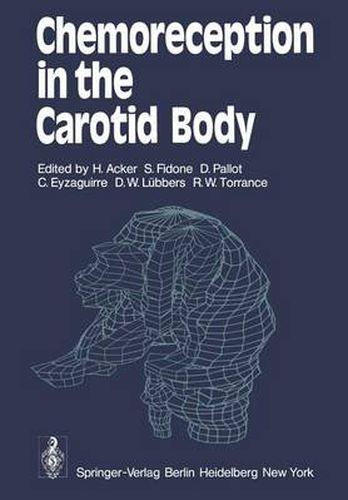Readings Newsletter
Become a Readings Member to make your shopping experience even easier.
Sign in or sign up for free!
You’re not far away from qualifying for FREE standard shipping within Australia
You’ve qualified for FREE standard shipping within Australia
The cart is loading…






This title is printed to order. This book may have been self-published. If so, we cannot guarantee the quality of the content. In the main most books will have gone through the editing process however some may not. We therefore suggest that you be aware of this before ordering this book. If in doubt check either the author or publisher’s details as we are unable to accept any returns unless they are faulty. Please contact us if you have any questions.
It is becoming traditional that periodically those of us interested in the carotid body hold an international meeting to discuss their results. In 1966 a meeting was organized by R. W. Torrance in Oxford and in 1973 by M. J. Purves in Bristol; in 1974 A. S. Paintal organized a satellite symposium of the Physiological Congress in Kashmir. The organizers of these meetings are to be commended for their efforts in publishing both the papers and discussions. At these meetings it has become apparent that the direction of research is becoming more sharpely focused on the cellular mechanisms of chemoreception. During the meeting in Dortmund the papers dealt mostly with the different cell types in the carotid body and their environment, i. e. , local P0 and local flow. These included 2 light and electron microscopic studies of the morphometric and histochemical pro perties of the different cells, microelectrode studies of the glomoid tissue to understand the conversion of a chemical stimulation into nervous activity, as well as strictly bio chemical and physiologic investigations concerning the dependence of the chemo receptive process on O consumption and the turnover of catecholamines. In spite 2 of the variety in methodology, it was apparent that all contributors had a common interest: to understand the mechanisms of chemoreception. Although at the meeting itself there was ample time to fully discuss the various papers, it has become necessary here to shorten the papers and discussions; otherwise the cost of publication would have been prohibitive.
$9.00 standard shipping within Australia
FREE standard shipping within Australia for orders over $100.00
Express & International shipping calculated at checkout
This title is printed to order. This book may have been self-published. If so, we cannot guarantee the quality of the content. In the main most books will have gone through the editing process however some may not. We therefore suggest that you be aware of this before ordering this book. If in doubt check either the author or publisher’s details as we are unable to accept any returns unless they are faulty. Please contact us if you have any questions.
It is becoming traditional that periodically those of us interested in the carotid body hold an international meeting to discuss their results. In 1966 a meeting was organized by R. W. Torrance in Oxford and in 1973 by M. J. Purves in Bristol; in 1974 A. S. Paintal organized a satellite symposium of the Physiological Congress in Kashmir. The organizers of these meetings are to be commended for their efforts in publishing both the papers and discussions. At these meetings it has become apparent that the direction of research is becoming more sharpely focused on the cellular mechanisms of chemoreception. During the meeting in Dortmund the papers dealt mostly with the different cell types in the carotid body and their environment, i. e. , local P0 and local flow. These included 2 light and electron microscopic studies of the morphometric and histochemical pro perties of the different cells, microelectrode studies of the glomoid tissue to understand the conversion of a chemical stimulation into nervous activity, as well as strictly bio chemical and physiologic investigations concerning the dependence of the chemo receptive process on O consumption and the turnover of catecholamines. In spite 2 of the variety in methodology, it was apparent that all contributors had a common interest: to understand the mechanisms of chemoreception. Although at the meeting itself there was ample time to fully discuss the various papers, it has become necessary here to shorten the papers and discussions; otherwise the cost of publication would have been prohibitive.